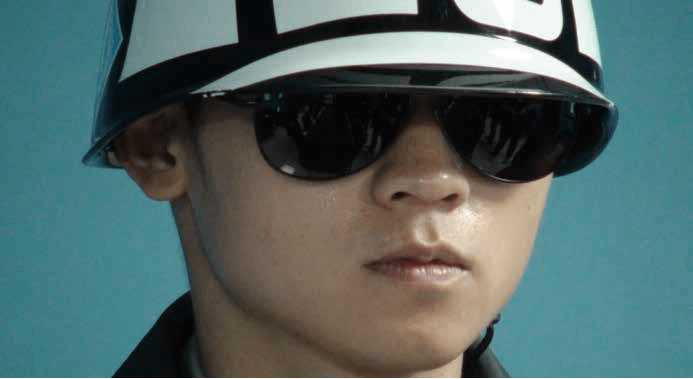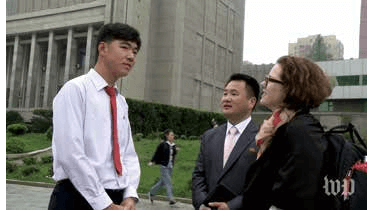Issue:

The troublesome task of covering Kim
While some media are opening bureaus in Pyongyang, journalists are still faced with crucial challenges when it comes to reporting on Japan’s reclusive neighbor.
by ANDY SHARP
The groans in the news room are palpable. Kim Jong Un has just rattled off yet another missile or detonated another nuclear device. Often before the morning’s first cup of coffee, reporters must scrap their plans for the day and try to make sense of North Korea’s latest provocation.
This scene doesn’t just take place in Seoul, but across Asia including Japan, where many correspondents are tasked with covering events on the Korean Peninsula. It’s a task that comes in addition to their main job of relaying to the world the latest shenanigans in Nagatacho, making sense of the latest Bank of Japan policy shift or knocking out a yarn on a weird Japanese TV commercial.
This presents numerous challenges. Reporters based here are immersed in Japanese culture, speak the language (to various degrees) and can quickly jump on a train to meet officials, conduct interviews, or simply discuss current affairs at the local izakaya with Japanese friends or colleagues. When news breaks across the Sea of Japan, however, it becomes a question of scouring media reports, calling experts on the peninsula and haggling with editors to fork out for a trip to Seoul. Even so, from the moment they hit the ground, they are playing catch up.
“I covered the 2014 Sewol ferry sinking from Tokyo,” says the Guardian’s Justin McCurry, who has been covering the Koreas for about a decade. “I had to rely on wires, the South Korean English language media, social media, plus occasional phone calls to English speaking South Koreans. Reporting from Japan didn’t necessarily prevent me from grasping the details and significance of the story, but I think my reports would have gained some thing from my being able to witness firsthand the mood of the country, the despair of the children’s parents and friends and the political repercussions in Seoul.”
But sometimes being on site is imperative. McCurry says he jumped on a flight to Seoul in March 2013 when Kim Jong Un was threatening to nuke the U.S. and declared a “state of war” against the South to see how scared ordinary South Koreans were (turns out they weren’t). “It was a great time to be in Seoul, despite the utter lack of preparation and inability to secure reasonably priced fixers at short notice,” he says. “The situation quickly deteriorated with the withdrawal of South Korean workers from the Kaesong joint industrial complex, North Korean threats to strike frontline islands and restart its main nuclear facility, not to mention speculation of nuclear tests and missile launches. At times it was a struggle to keep on top of everything.”
McCurry adds that he ended up staying in South Korea for two weeks, and filed articles ranging from how islanders near the North Korean coast were preparing for artillery attacks to a color piece about Psy’s follow up single to “Gangnam Style.”
WHEN EXPERIENCE MATTERS
Anna Fifield, the Washington Post’s Tokyo bureau chief since 2014, is at a bit of an advantage, having previously spent four years in Seoul covering the Koreas for the Financial Times and speaking “workable” Korean. She’s visited Pyongyang seven times and travels to the South Korean capital about once a month taking the flight from Haneda to Gimpo more often, she jokes, than she rides the Yamanote Line.
Even so, Fifield says, North Korea is the biggest challenge because it’s so difficult to get information and paint a real picture of what’s happening. “This involves talking to a wide range of people,” the New Zealander says. “North Koreans who have escaped to South Korea; North Koreans living in China, both legally and illegally; aid workers and diplomats who live in or travel to North Korea; and analysts who speak Korean.”
Fifield says about three quarters of the stories on Korea she writes are about the North. “The continuing survival of North Korea is the biggest story for me,” she says. “How are they doing it, even after a decade of sanctions and the transition to a young, third generation leader? The South Korean reaction is also increasingly important to cover because the Park administration is taking a really tough stance against the North. The sunshine policy days are well and truly over.”
In the South, Fifield says, after an “incredible” economic transformation, there are real concerns about inequality and the loss of optimism among young people. “The story I wrote about South Korea that resonated most locally was about “Hell Chosun” the idea that ordinary young people can’t get ahead in South Korea, that you must be born into a wealthy or influential family.”
“Often there’s a herd mentality on North Korea coverage because everyone is working from the same minimal source material”same minimal source material”
THE BUREAU CHIEF
Even closer to the story is Alastair Gale, the Wall Street Journal’s Seoul bureau chief who will be returning to Japan this year after a five year stint on the peninsula.
Gale, who leads a handful of reporters in Seoul, says that coverage of Korea from outside the country varies by publication, but it is weaker since reporters miss out on interaction with news sources such as business and government people. “It is by definition harder since there’s a lot you absorb just by being here and being surrounded by events.”
Gale says that while stories such as the Samsung Galaxy Note 7 phone debacle gain international traction, often the big local stories are about political or celebrity scandals that don’t have much of an audience outside the country. “The leader of the ruling party went on hunger strike recently but I don’t think it got much coverage in the foreign press.”
On covering the North, he proceeds with caution. “Often there’s a herd mentality on North Korea coverage because everyone is working from the same minimal source material and the sexiest story is the one that gets the most attention,” Gale says. “You can write several very different stories by speaking to different analysts who speculate in different ways. That’s a major frustration if you’re trying to deliver a reliable story.”
Such examples include the false reports about Kim’s uncle being fed to a pack of dogs, or his ex appearing in porn films, and other such rumors.
Even being in Pyongyang doesn’t help sometimes. A few years ago, an official trip for a group of overseas reporters to North Korea happened to coincide with a rocket launch. They were unable to report from the scene because they had no idea what was happening, while correspondents elsewhere had access to South Korean media and other sources.

OUR MAN IN PYONGYANG
Eric Talmadge is possibly closer to the story than any journalist with an address in Tokyo he’s the Pyongyang bureau chief for the Associated Press and is based there, on average, for about 10 days a month. (AFP also opened a bureau there in September to join a handful of international media outlets including Kyodo News.)
After more than a decade of reporting on Japan and Asian Pacific security Talmadge accepted his new role in Pyongyang in 2013 (the bureau opened in 2012) due to it being a “unique challenge professionally.”
Talmadge has a staff of two local reporters and a driver, and usually travels to Pyongyang with Singapore based photographer Mayee Wong. He says the restrictions he faces especially as an American are primarily related to access.
Even so, he says, he’s managed to pull off exclusive interviews with the head of the Foreign Ministry’s U.S. division, a senior official at the nation’s space agency, and a two-hour interview with the foreign minister – a meeting that took place in New York as the result of “groundwork done in Pyongyang.”
“Our stories about daily life in the capital and the provinces provide a window into the North that I think is a very important aspect of our being there,” Talmadge says. “Every foreign correspondent in Japan would agree that having actually been, or being, here informs their work in a similar way and makes their work better.”
Though NKNews.org, a website focused on the country, published a roughly 4,000 word report in 2014 that alleged the U.S. news agency pulls its punches, Talmadge says there’s a reason for AP being in Pyongyang, and it isn’t that they are just waiting for the country to someday open up.
“Every story that we write, every day that we go out and talk to people on the street, every time we sit down and complain or debate with officials there about how we wrote a story or why we took a certain photo is part of that effort,” he says. “The most important thing is to produce the best journalism that I can, right now, and tenaciously build on each success, big or small. It may sound corny, and I know not all agree, but I honestly believe we are fighting the good fight for everybody.”
Andy Sharp is Bloomberg’s Tokyo-based editor for Japan and Korea government news.

